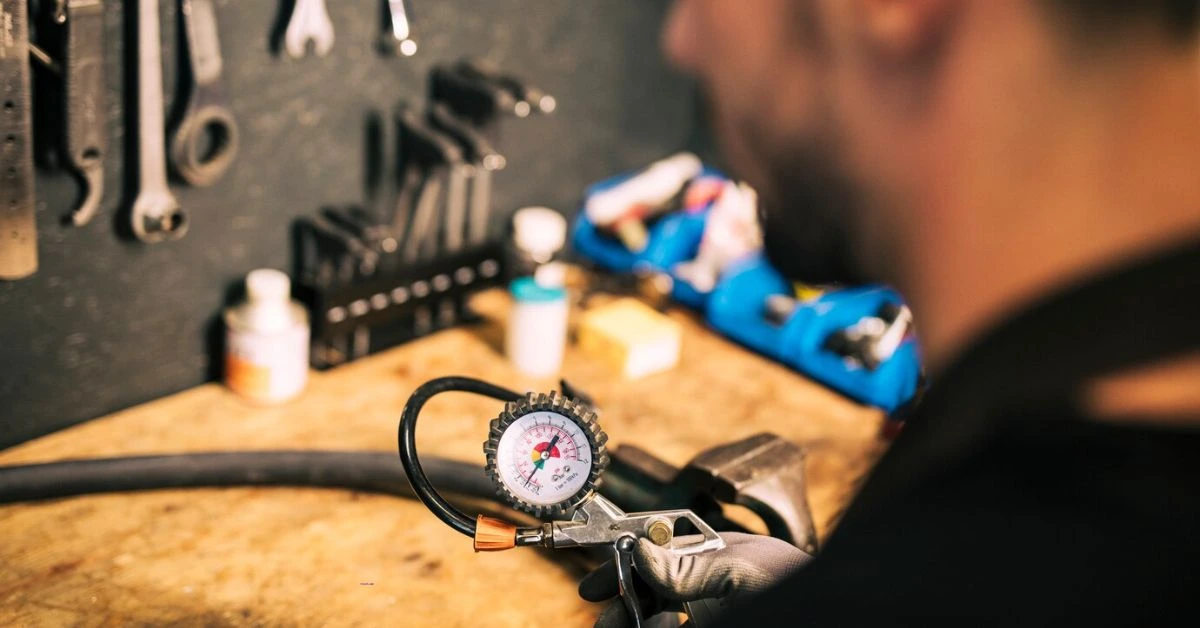Vacuum Meters: Everything You Need to Know About Vacumetros
In the modern world of science, manufacturing, and technology, precision and accuracy are not just desirable—they’re essential. One of the most critical tools in ensuring this precision in low-pressure environments is the vacuum meter, also known as a vacuum gauge. These devices are used extensively in industries like pharmaceuticals, semiconductors, food processing, aerospace, and more. But what exactly is a vacuum meter, and how does it work? In this comprehensive guide, we’ll explore every aspect of vacuum meters, breaking down complex concepts into simple terms.
What Is a Vacuum Meter?
A vacuum meter is a pressure-measuring instrument that measures the pressure in a vacuum, which is any space where the pressure of a gas is lower than atmospheric pressure. While atmospheric pressure at sea level is considered to be 101.325 kPa, vacuum meters are designed to measure pressures below this standard.
In many cases, pressure values are expressed in units such as bar or psi, depending on regional standards or industry requirements. Vacuum meters help determine how far below atmospheric pressure a given environment or container is, which is essential for maintaining quality control, efficiency, and safety in vacuum systems.
Understanding Vacuum Pressure and Atmospheric Pressure
To fully appreciate the function of vacuum meters, it’s important to grasp the difference between vacuum pressure and atmospheric pressure:
- Atmospheric pressure is the standard pressure at sea level, which is typically 101.325 kilopascals (kPa).
- Vacuum pressure (Pvac) refers to the pressure in an environment below atmospheric pressure, often expressed as a negative value with respect to the atmosphere.
A vacuum is essentially a space where the gas pressure is lower than atmospheric pressure. In technical applications, creating and maintaining this low-pressure environment is critical, which is where vacuum meters come in.
Why Are Vacuum Meters Important?
Vacuum meters are indispensable in processes where gas behaviour and low pressure play a crucial role. Their importance is seen in
- Ensuring vacuum integrity in sealed environments.
- Monitoring leaks in vacuum systems.
- Optimising vacuum pump efficiency.
- Controlling sensitive manufacturing processes.
- Maintaining quality standards in various industries.
From automotive testing to laboratory experiments, these meters provide the data and control needed to maintain precise vacuum conditions.
Types of Vacuum Meter
There are various types of vacuum meters based on how they measure pressure and the range of vacuum they can detect. The main categories include:
Mechanical Vacuum Gauges
These are typically used in low vacuum applications. They include:
- Bourdon Tube Gauges—Use a curved tube that straightens under pressure.
- Diaphragm Gauges—Use a flexible membrane to measure pressure changes.
- Capsule Gauges—Ideal for very low-pressure ranges.
Thermal Conductivity Gauges
These gauges use the thermal conductivity of gases to infer pressure. Examples include:
- Pirani Gauge—Measures pressure by the rate at which a wire loses heat in a vacuum.
- Thermocouple Gauge—Uses a thermocouple to detect temperature changes affected by vacuum.
Ionization Gauges
Used in high vacuum applications:
- Cold Cathode Gauge—Uses ionised gas particles to determine pressure.
- Hot Cathode (Bayard-Alpert) Gauge—Similar to cold cathode but more accurate in ultra-high vacuum conditions.
Capacitance Manometers
Highly accurate and stable over a wide range, these gauges measure pressure via capacitance changes in a diaphragm.
Units of Measurement in Vacuum Meters
Vacuum pressure can be expressed in various units. The most common are:
- kPa (kilopascal)
- bar
- psi (pounds per square inch)
- Torr
- mmHg (millimeters of mercury)
- mbar (millibar)
The choice of unit often depends on the industry, application, or regional standard. For instance, laboratories may prefer Torr or mmHg, while industrial applications might use bar or psi.
Vacuum Range Classification
Vacuum levels are classified into different ranges based on how low the pressure is:
- Low Vacuum: 100 to 1 mbar
- Medium Vacuum: 1 to 10⁻³ mbar
- High Vacuum: 10⁻³ to 10⁻⁷ mbar
- Ultra-High Vacuum: <10⁻⁷ mbar
- Extreme High Vacuum: <10⁻¹² mbar
Each of these ranges requires specific types of vacuum meters for accurate measurement.
How Does a Vacuum Meter Work?
The working principle of a vacuum meter depends on its type. However, the basic process involves detecting pressure changes within a sealed system and converting that data into a readable value.
- In mechanical gauges, pressure changes deform a diaphragm or tube, which is then translated into a scale reading.
- In thermal gauges, changes in gas thermal conductivity alter a temperature sensor’s response.
- In ionisation gauges, the number of ionised particles generated in the vacuum correlates to the pressure level.
Applications of Vacuum Meters
Vacuum meters are vital in a wide variety of applications:
Industrial Manufacturing
- Semiconductor fabrication
- Vacuum packaging
- Metal processing
- Leak detection
Scientific Research
- Laboratory experiments
- Space simulation chambers
- Particle accelerators
Automotive Industry
- Brake system testing
- Engine diagnostics
Food and Beverage Industry
- Vacuum sealing and preservation
- Bottling under controlled pressure
Choosing the Right Vacuum Meter
When selecting a vacuum meter, consider the following:
- Measurement range needed for your application
- Accuracy requirements
- Type of vacuum system
- Environmental conditions (temperature, vibration)
- Ease of calibration and maintenance
- Unit of measurement preferred (bar, psi, kPa, etc.)
Choosing the right type ensures reliability, safety, and cost-efficiency.
Calibration and Maintenance
Regular calibration is essential to keep your vacuum meter accurate. Over time, exposure to harsh conditions, dust, or chemical vapours can affect sensor performance.
Maintenance tips:
- Follow manufacturer guidelines.
- Use clean, dry environments when possible.
- Replace damaged components promptly.
- Schedule professional calibration periodically.
Modern Advancements in Vacuum Meter Technology
Thanks to modern innovations, vacuum meters now offer:
- Digital displays for easy reading
- Data logging for trend analysis
- Remote monitoring via IoT
- High precision sensors
- Automatic zeroing and calibration features
These advancements have made vacuum measurement more reliable, user-friendly, and efficient than ever before.
Vacuum Meters vs. Pressure Gauges: What’s the Difference?
Although they serve similar functions, vacuum meters and pressure gauges are not the same:
| Feature | Vacuum Meter | Pressure Gauge |
| Purpose | Measures below atmospheric pressure | Measures above atmospheric pressure |
| Range | Negative pressure (Pvac) | Positive pressure |
| Applications | Vacuum systems, leak detection | Compressors, hydraulics, pneumatics |
Understanding the distinction ensures you choose the right tool for your specific application.
Common Issues and Troubleshooting
Here are some issues users may encounter with vacuum meters:
- Fluctuating Readings—Could be due to system leaks or faulty sensors.
- No Reading—Power failure or disconnected sensor.
- Inaccurate Measurement—Needs calibration or sensor replacement.
- Condensation Inside Gauge—Indicates system contamination.
Timely troubleshooting helps prevent downtime and ensures consistent performance.
Conclusion
Vacuum meters are essential tools in today’s high-tech, precision-driven world. Whether you’re working in a research lab, managing industrial production, or maintaining sensitive equipment, understanding how to use and select the right vacuum meter can make a significant impact on your efficiency and quality control.
They help monitor, regulate, and maintain vacuum environments with exceptional accuracy. From simple mechanical gauges to sophisticated ionisation sensors, vacuum meters continue to evolve—providing ever more reliable performance across a broad spectrum of industries.







